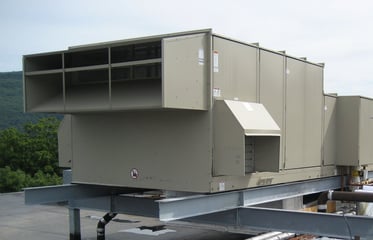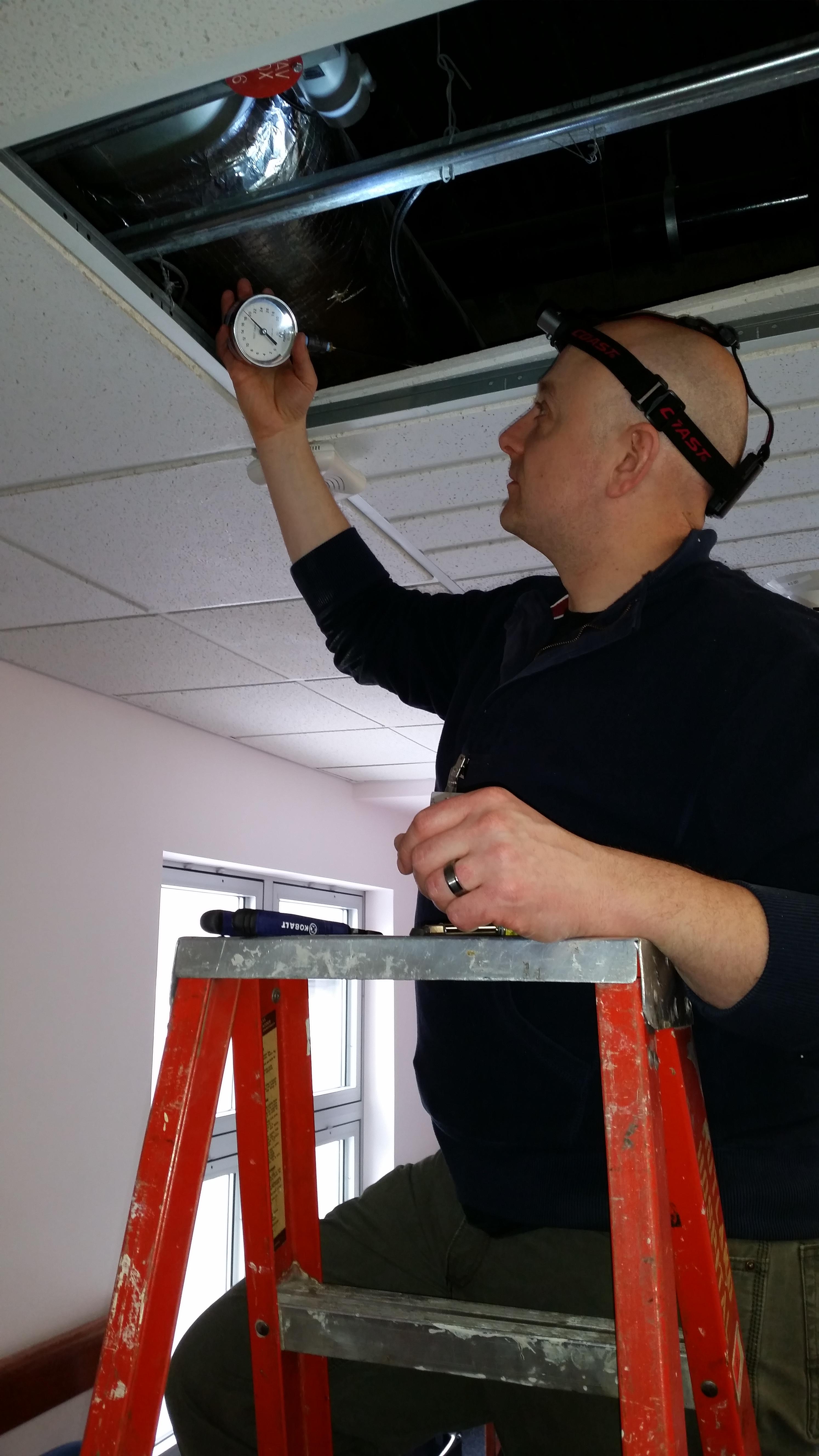Recently I researched the “Roof Top Unit Challenge” which was created by the U.S. Department of Energy (DOE). What is the Roof Top Unit challenge? Launched in January 2011, the DOE released a design specification or commercial RTUs (Roof Top Units) with capacities ranging between 10 and 20 tons. RTUs built to match this specification are expected to have reduced energy usage by as much as 50% compared to a code compliant RTU. There is a large dependency on the building type and location of the RTU in relation to amount of energy savings. Since January 2011, top performing RTU manufacturers are working to design units that meet this specification. In this post, I will discuss what it takes for a unit to be part of the RTU Challenge and which manufacturers have models that are designed to meet this performance specification.

RTU Challenge Specification
The RTU challenge has a complete specification describing what is required of an RTU and associated system. In order to calculate the efficiency of an RTU, there are three different metrics that can be used:
- Energy-efficiency ratio (EER) – Refers to the ratio of the cooling rate compared to the inputted power at full-load conditions.
- Seasonal energy-efficiency ratio (SEER) – Refers to a seasonally adjusted rating (only applies for RTUs with a cooling capacity less than 65,000 BTU/hour).
- RTU Challenge uses: Integrated energy-efficiency ratio (IEER) – Refers to overall operating efficiency at different part-load capacities.
IEER (part-load capacities) is a better metric to use because full load is generally only experienced 2-3% of the operating time. The RTU challenge requires an IEER of at least 18.0 (ASHRAE 90.1 – 2013 requires an IEER of 12.7). In addition to an IEER requirement, the RTU must also have direct digitals controls (DDC) to allow for proper monitoring and trending as well as operational fault detection (just to name a few).
How Manufacturers Achieve this Efficiency
The main features that enable a unit to meet the RTU Challenge specification are:
- Efficient compressor controls (either staged-capacity or variable-capacity to reduce energy consumption during part-load operation)
- Efficient fan motors with variable speed controls
- Economizer (provides free cooling when the outside air has opportune characteristics)
- Efficient condenser options (air-cooled condensers are being improved to increase the rate of heat removal)
In May 2012, the Rebel rooftop unit manufactured by Daikin became the first to meet the RTU Challenge. In May 2013, the WeatherExpert unit manufactured by Carrier became the second to meet the Challenge. Currently, there are five companies that offer RTUs that meet the performance specification (Daikin, Carrier, Lennox, 7AC Technologies, and Rheem).
Advanced RTU Campaign
The DOE’s Office of Energy Efficiency and Renewable Energy’s Better Buildings Alliance have developed the Advanced RTU Campaign to help promote the RTU Challenge. This campaign not only includes high-performance RTUs, but also retrofit control devices for existing units. The campaign describes the RTU candidates for either unit replacement or controls retrofit.
Per the Better Buildings Alliance, a good candidate for an RTU replacement has the following characteristics:
- Greater than 10 years old
- Poor operating conditions
- Requires expensive repairs or constantly replacing/fixing part of the unit
- Building requires improved control (humidity and comfort)
- There is already a planned comprehensive retrofit for the building
- Unit uses an obsolete refrigerant (R22)
A good candidate for a retrofit with new controllers has the following characteristics:
- Greater than 7 tons cooling capacity
- Less than 10 years old
- Has constant speed fan control and constant ventilation
- In decent working condition with an expected additional lifetime of 5 years or more.
For further reading, I would recommend checking out the website for the Advanced RTU Campaign. Of course, if you have an RTU that you’re thinking about upgrading or replacing, Cx Associates would be happy to discuss your available options and the energy savings


